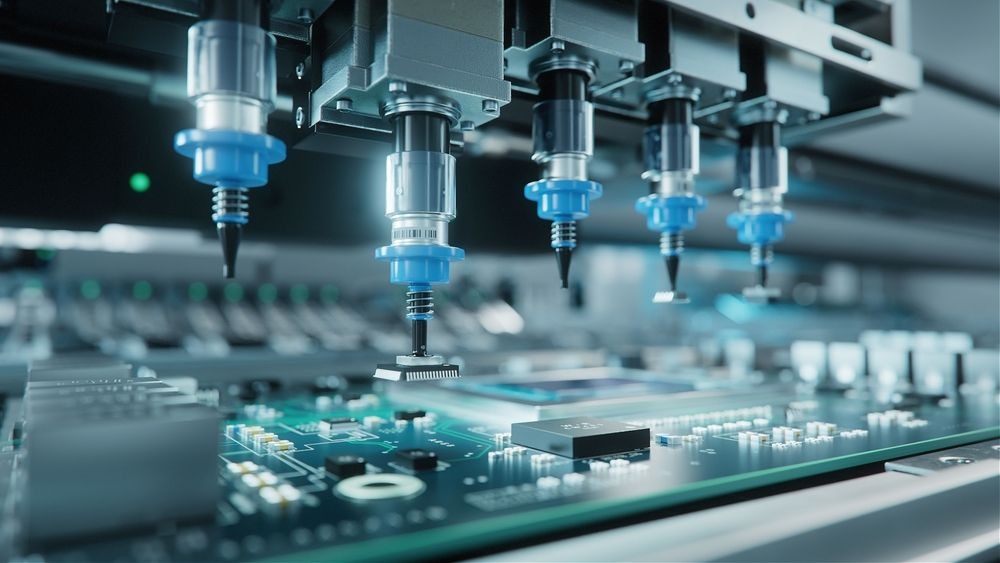Printed Circuit Boards (PCBs) are the foundation of modern electronics, powering everything from smartphones to industrial automation systems. Developing and producing a PCB is a multi-stage process that requires precision, expertise, and collaboration. PCB design and assembly are not just about creating functional boards—they are about ensuring they are reliable and ready for mass production if needed.
This article outlines the lifecycle of PCB assembly, highlighting the key stages that take a PCB from concept to a finished product.
Stage 1: Concept and design
The lifecycle of a PCB begins with a clear idea. PCB assembly services involving engineers and product designers outline the intended functionality of the PCB and define its specifications. This step involves creating a schematic diagram, which maps out the electrical connections between components.
Specialized software tools, like CAD programs, are used to create the PCB layout. This layout confirms that all components, such as resistors, capacitors, and microchips, are placed optimally for performance and manufacturability. During this stage, design for manufacturability (DFM) principles are applied to minimize errors and simplify production.
Stage 2: Prototyping
Once the design is complete, the next step is prototyping. Prototypes are small batches of PCBs created to test the design’s functionality. This stage is critical for identifying and addressing potential issues before full-scale production begins.
Engineers evaluate factors like signal integrity, thermal performance, and power efficiency during prototyping. If any issues are detected, the design is adjusted accordingly. This iterative process verifies that the final PCB is functional and reliable.
For instance, a prototype for a high-speed telecommunications PCB might reveal unexpected signal interference, prompting adjustments to the trace layout. These refinements are crucial to achieving optimal performance.
Stage 3: Component sourcing
Component sourcing is an essential step in the PCB design and assembly lifecycle. Manufacturers procure the necessary components from trusted suppliers, such as integrated circuits, connectors, and passive elements. Verifying the quality and compatibility of these components is vital to the product’s success.
At this stage, manufacturers also consider lead times and cost efficiency. A reliable supplier network ensures that components are delivered on time, thus preventing production delays. Additionally, sourcing high-quality parts reduces the risk of failures in the finished product.
Stage 4: Assembly
The assembly phase is where the design comes to life. It involves mounting components onto the board using surface-mount technology (SMT) and through-hole assembly techniques. SMT places components directly onto the PCB surface, while through-hole assembly involves inserting components into drilled holes for additional stability.
During this stage, automated machines precisely place components with accuracy and consistency. The board is then soldered to secure the components and create electrical connections. After soldering, the board undergoes inspection to verify that all components are correctly positioned and functioning.
Stage 5: Testing and quality assurance
Testing is a critical stage in the lifecycle of PCB assembly. Manufacturers conduct rigorous tests to ensure the PCB meets performance and safety standards. Common testing methods include:
- Automated Optical Inspection (AOI): Detects defects in solder joints, components, and traces.
- In-Circuit Testing (ICT): Verifies that individual components and circuits function as intended.
- Functional Testing (FCT): Simulates real-world conditions to assess overall PCB performance.
Stage 6: Production and delivery
After passing all quality assurance tests, the PCB moves to full-scale production. Manufacturers produce the required volume of PCBs, whether a small batch for a niche application or a large order for mass-market products. Packaging and labeling are also handled during this stage to deliver the boards in pristine condition.
Logistics and supply chain management play a crucial role in this phase. Partnering with a manufacturer that offers turnkey PCB assembly services simplifies the process by handling every aspect of production and delivery, allowing clients to focus on their core business operations.
Conclusion
The lifecycle of PCB assembly services is a complex yet vital process that transforms an idea into a functional electronic product. Each stage, from concept and design to production and delivery, requires precision, expertise, and collaboration.
Partnering with an experienced PCB assembly service means your boards are manufactured to the highest standards, reducing risks and maximizing performance. By understanding this lifecycle, businesses can better manage the challenges of PCB production and bring innovative products to market with confidence.


